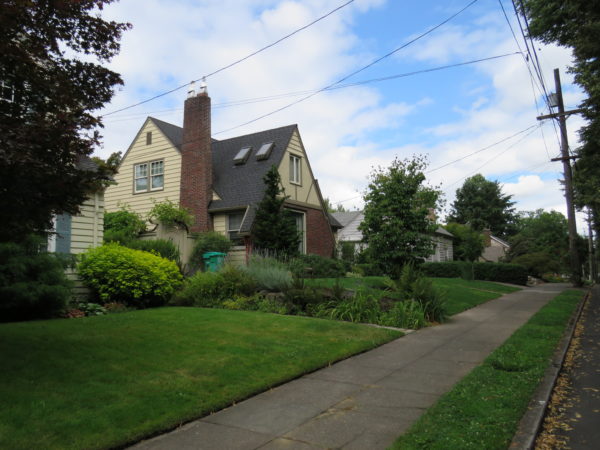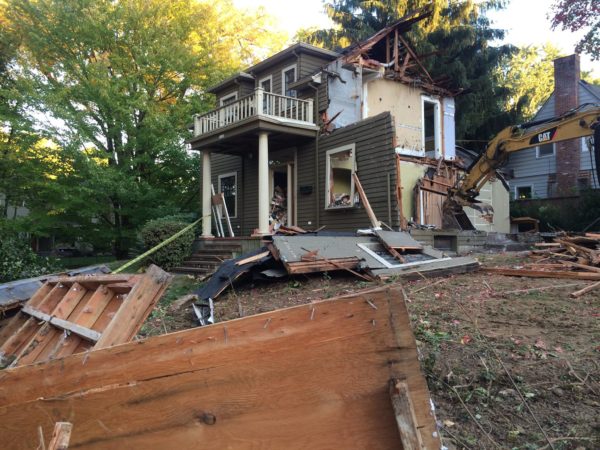 Eastmoreland Neighborhood Association’s Board of Directors have voted to move forward with pursuing the designation of their neighborhood as a Historic District listed in the National Register of Historic Places. The neighborhood association organized an informational workshop about the proposed historic district designation on May 26. The neighborhood views this designation as a tool to significantly curb the demolition epidemic and appropriately guide its growth and evolution in the future.
Eastmoreland Neighborhood Association’s Board of Directors have voted to move forward with pursuing the designation of their neighborhood as a Historic District listed in the National Register of Historic Places. The neighborhood association organized an informational workshop about the proposed historic district designation on May 26. The neighborhood views this designation as a tool to significantly curb the demolition epidemic and appropriately guide its growth and evolution in the future.
Now known as Eastmoreland, the area was first settled in 1860 as Crystal Springs Farm. It was platted in 1909 during the streetcar era, but had a boom from 1920-1935, with half of the housing stock being built during this time period. The two most common house styles built during this era are English Cottage and American Colonial Revival. The streets were designed to follow the creek paths, with setbacks and tree canopy accentuating the well-executed neighborhood plan.
During the meeting in late May, Eastmoreland’s Land Use Co-Chair Rod Merrick, stated that the reason to pursue National Register designation is to “maintain a sense of place, develop clear guidelines for historic district design review process, and to protect the neighborhood’s historic characteristics.” Listing as a district in the National Register would recognize the significance of Eastmoreland to Portland and the state of Oregon but it more importantly offers the only tool to neighbors and city planners for the legal protection of the features which have historically defined the neighborhood. If a home is a contributing building in the historic district, the city has the authority to deny a demolition request or place conditions on their approval. Historic district designation also allows the city to enforce a design review process that requires certain modifications of a house, or new construction, to be reviewed and align with the rest of the neighborhood’s character and historic integrity.

process of being demolished. The home could have been
protected from demolition with a National Register historic
designation. (Photo Courtesy of Eastmoreland
Neighborhood Association)
Following the passage of the statewide Owner Consent Law in 1995, any neighborhood that wishes to be distinguished as a conservation or landmark district at the local level must have 100% property owner consent. Due to this law, only designation and listing in the National Register provides a feasible possibility for protection at the local level as only 50% plus 1 of the affected property owners must agree to the listing. In the past, Eastmoreland has explored various planning and zoning mechanisms available to Portlanders but limited success led it to consider the option of National Register designation. The neighborhood has selected historic preservation consultant AECOM to facilitate the process. They are in the beginning stages of documentation and will first conduct a survey of the neighborhood as well as engage and inform neighbors.
There are 16 historic districts in Portland that are listed in the National Register and two were represented at the Eastmoreland Neighborhood historic district informational meeting in May. Henry Kunowski, a homeowner in Ladd’s Addition, and Jim Heuer, a member of the Land Use Committee and Historic Preservation Committee of the Irvington Community Association, represented their respective neighborhoods. Ladd’s Addition has been a historic district since 1988 and Irvington since 2010. Both have seen a substantial shift in the way their neighborhood has evolved with any demolitions or new construction resulting from a careful public process.
Many neighborhoods throughout the city are now considering the possibility of pursuing a National Register listing to combat the demolition epidemic in Portland. Restore Oregon is partnering with Eastmoreland Neighborhood Association, among others, to organize a public opportunity to ask questions and receive answers from an expert panel on the topic of living in a historic district. We anticipate this public forum will take place in late summer.

